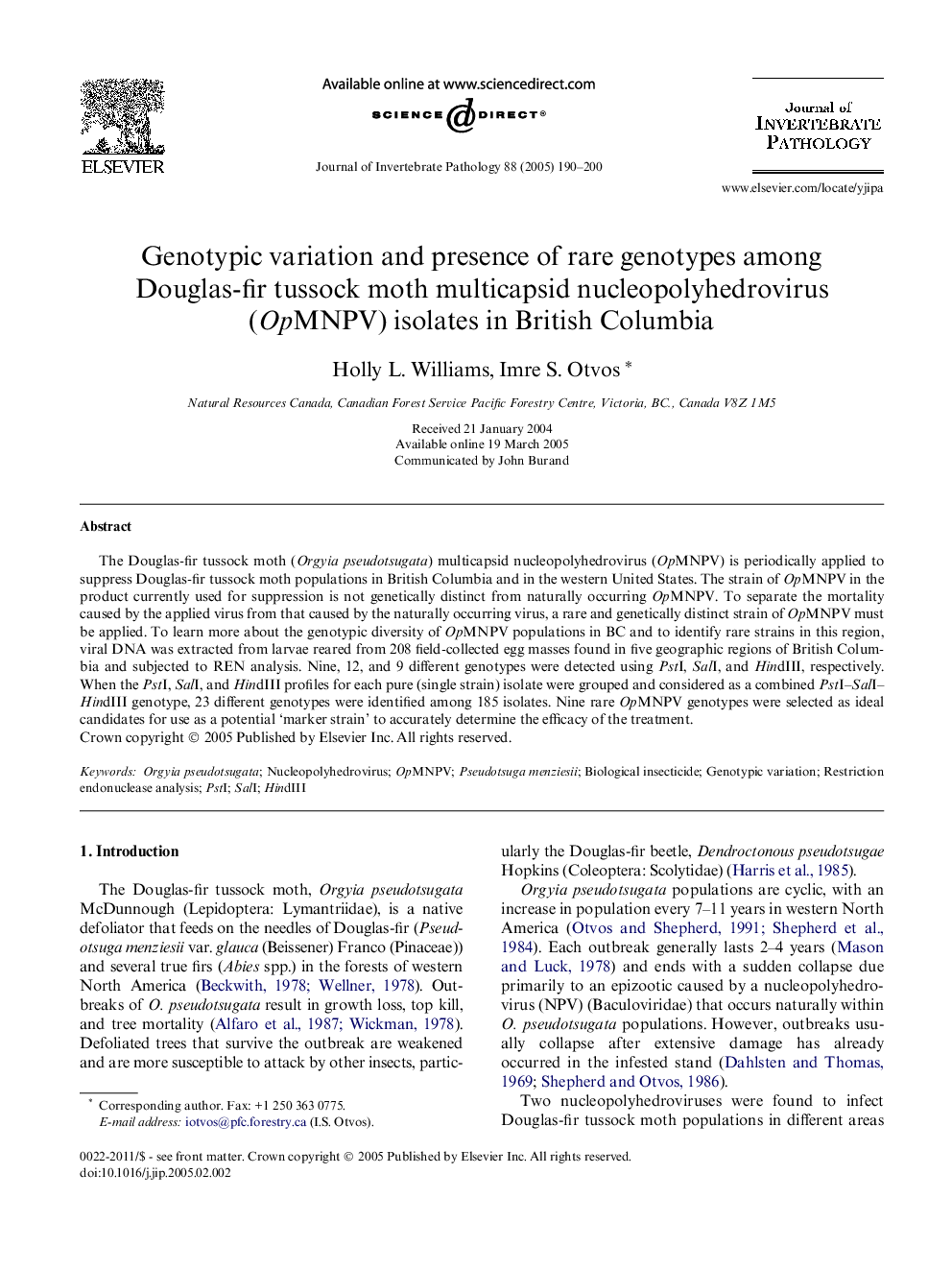| Article ID | Journal | Published Year | Pages | File Type |
|---|---|---|---|---|
| 9486561 | Journal of Invertebrate Pathology | 2005 | 11 Pages |
Abstract
The Douglas-fir tussock moth (Orgyia pseudotsugata) multicapsid nucleopolyhedrovirus (OpMNPV) is periodically applied to suppress Douglas-fir tussock moth populations in British Columbia and in the western United States. The strain of OpMNPV in the product currently used for suppression is not genetically distinct from naturally occurring OpMNPV. To separate the mortality caused by the applied virus from that caused by the naturally occurring virus, a rare and genetically distinct strain of OpMNPV must be applied. To learn more about the genotypic diversity of OpMNPV populations in BC and to identify rare strains in this region, viral DNA was extracted from larvae reared from 208 field-collected egg masses found in five geographic regions of British Columbia and subjected to REN analysis. Nine, 12, and 9 different genotypes were detected using PstI, SalI, and HindIII, respectively. When the PstI, SalI, and HindIII profiles for each pure (single strain) isolate were grouped and considered as a combined PstI-SalI-HindIII genotype, 23 different genotypes were identified among 185 isolates. Nine rare OpMNPV genotypes were selected as ideal candidates for use as a potential 'marker strain' to accurately determine the efficacy of the treatment.
Keywords
Related Topics
Life Sciences
Agricultural and Biological Sciences
Ecology, Evolution, Behavior and Systematics
Authors
Holly L. Williams, Imre S. Otvos,
